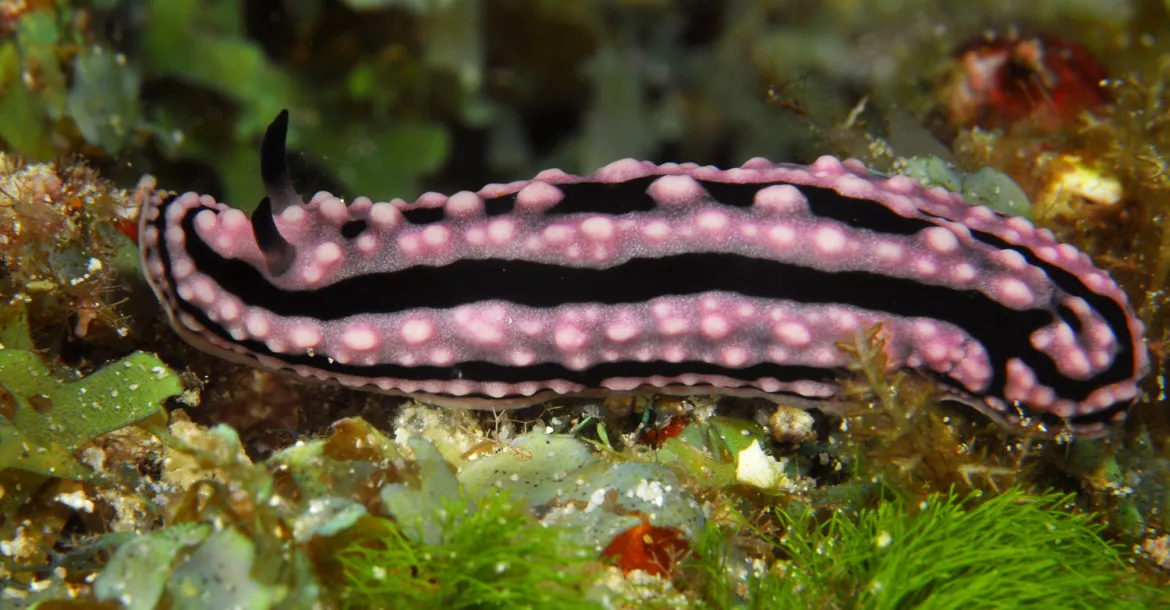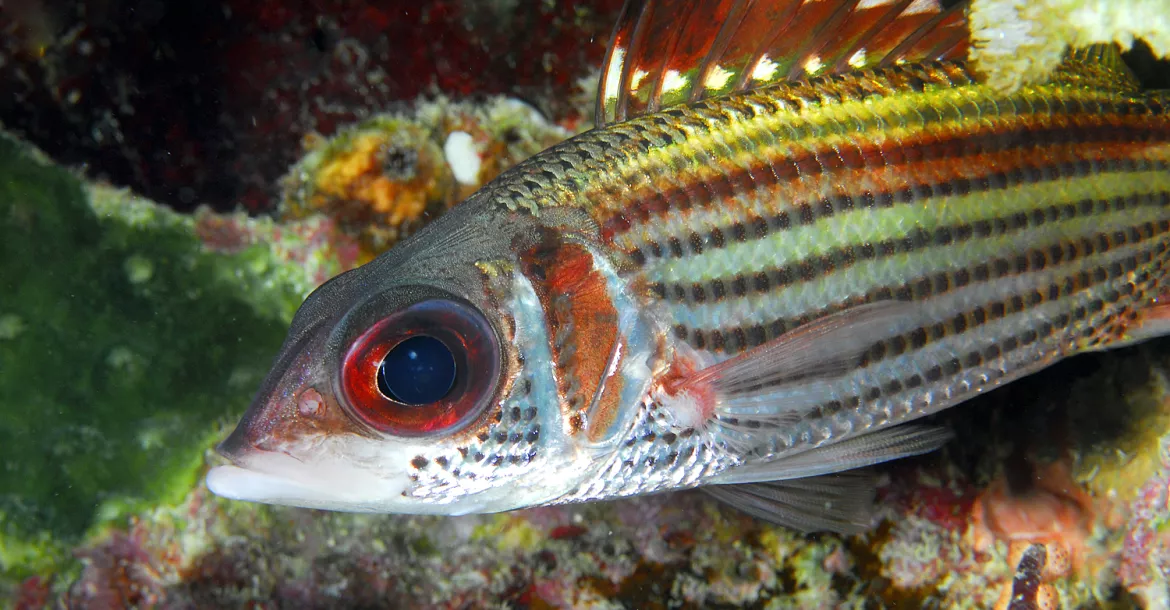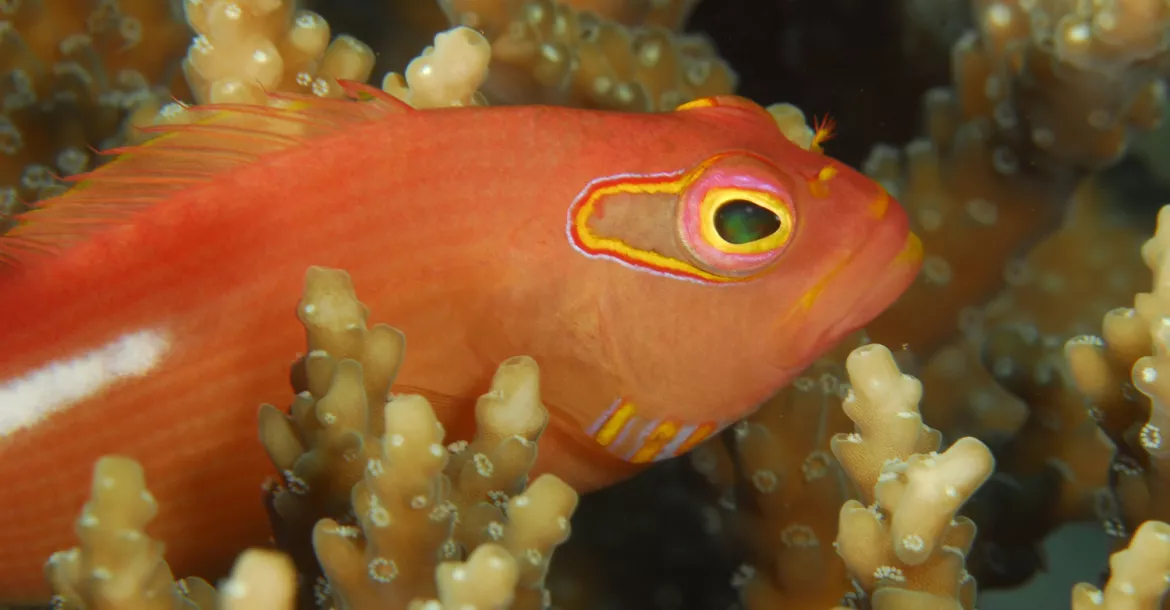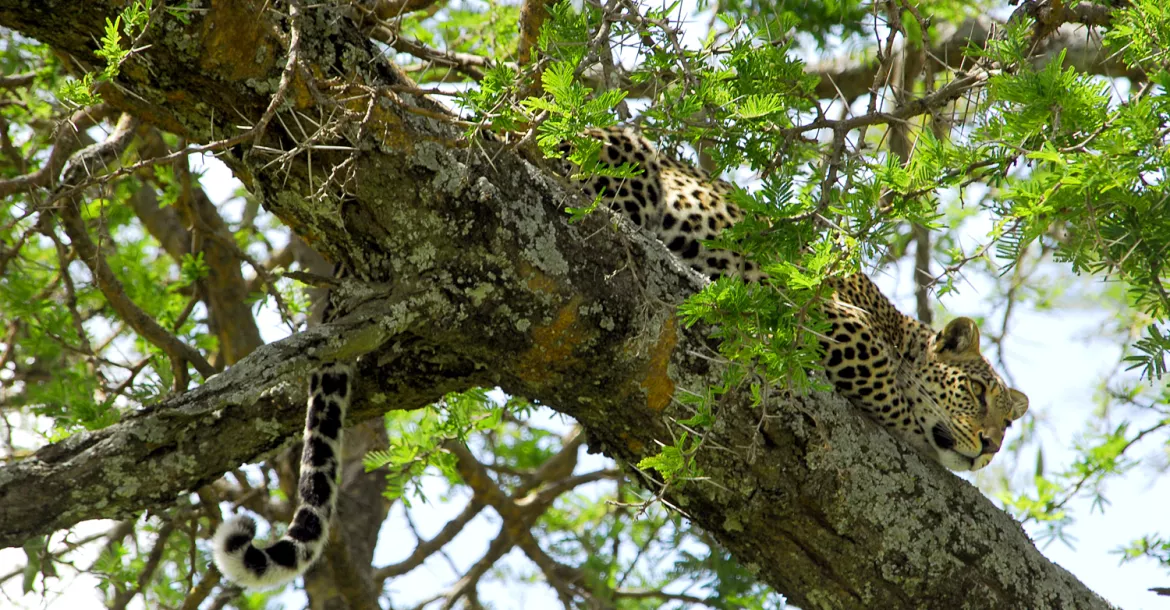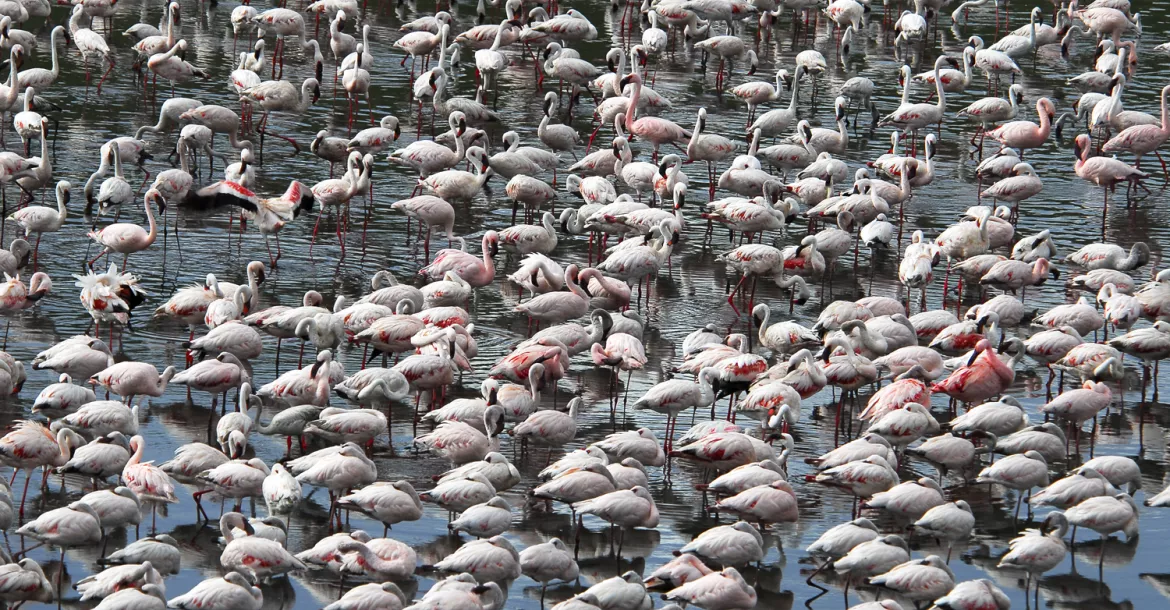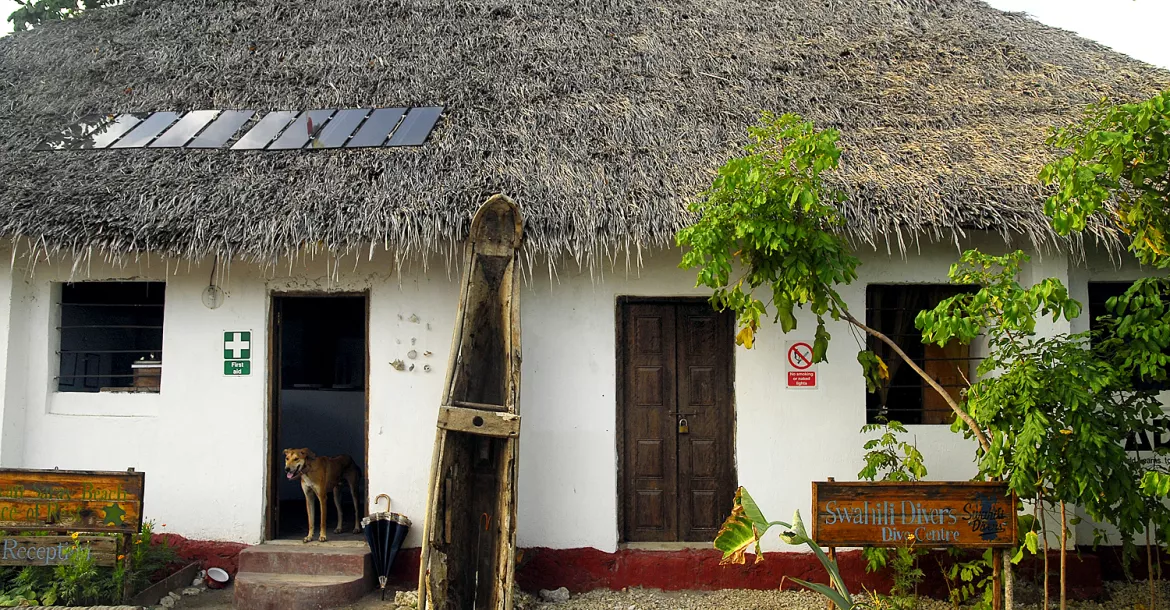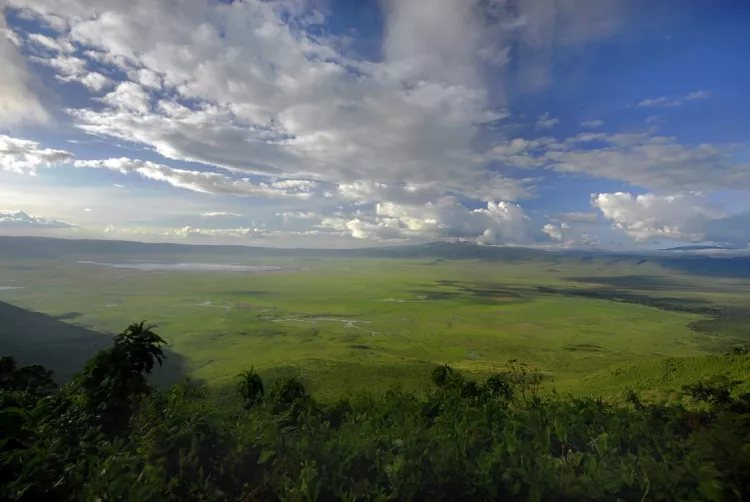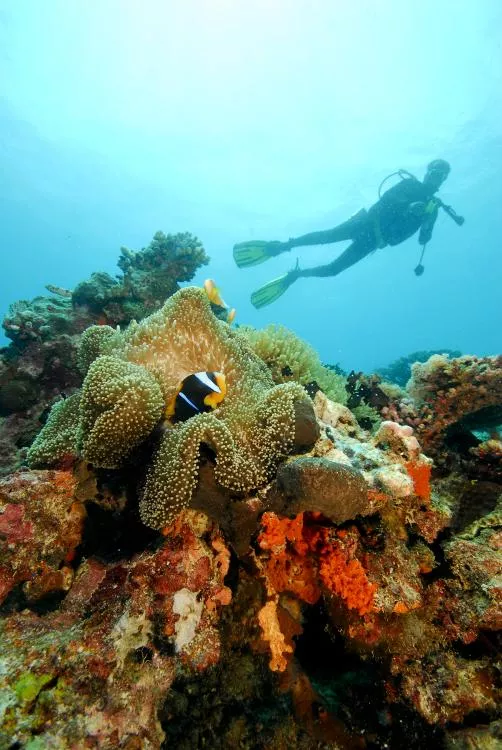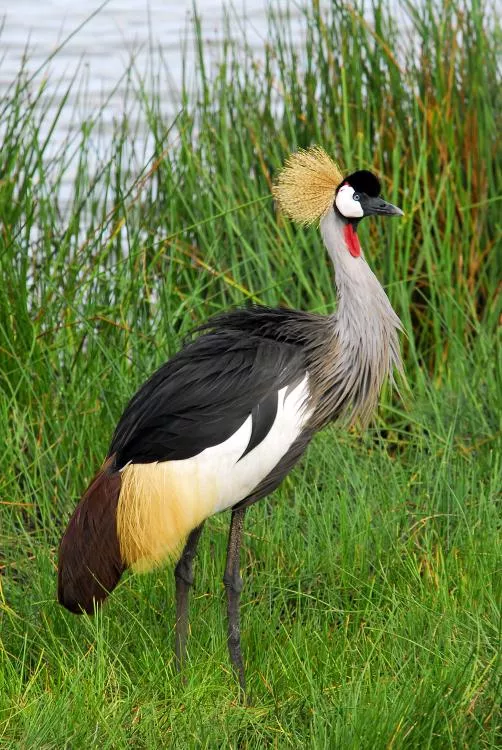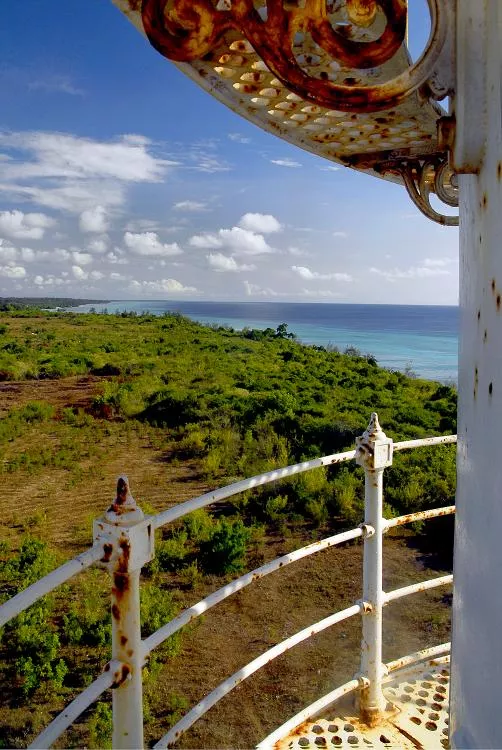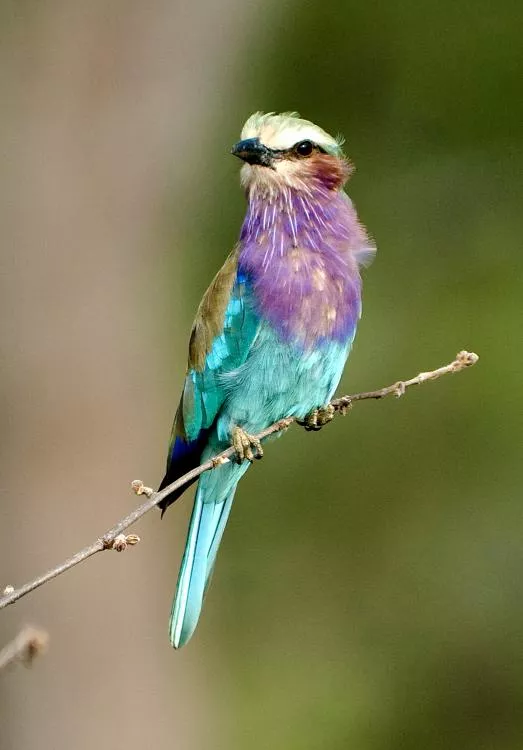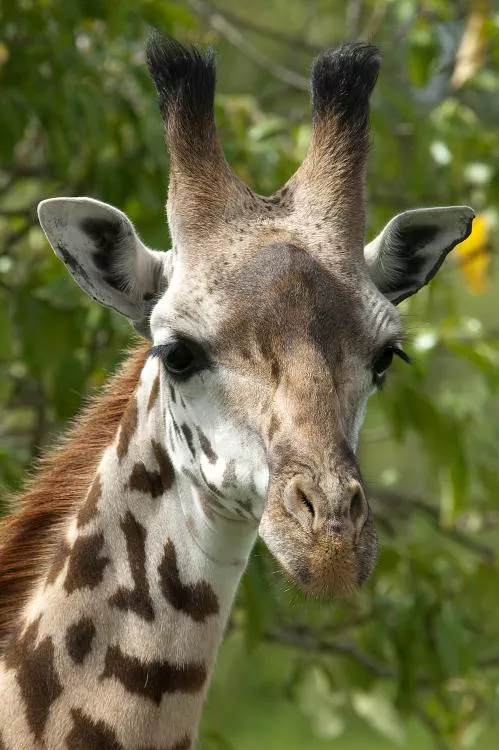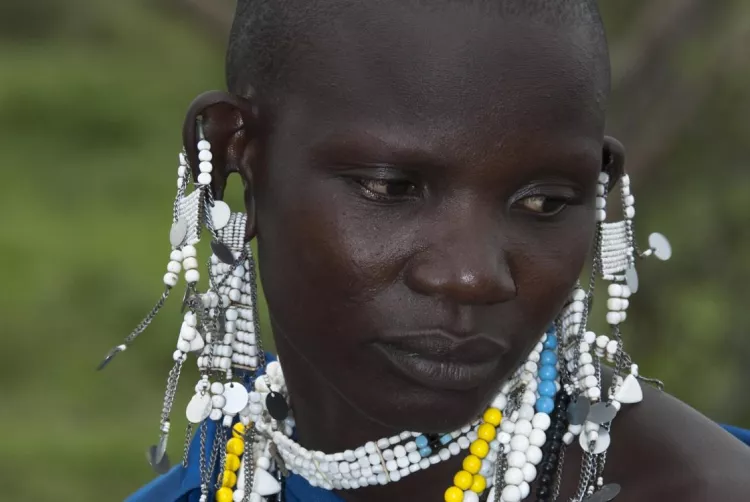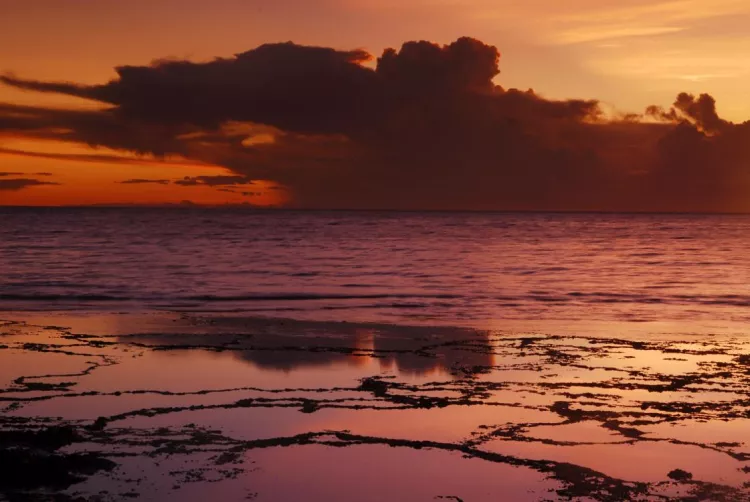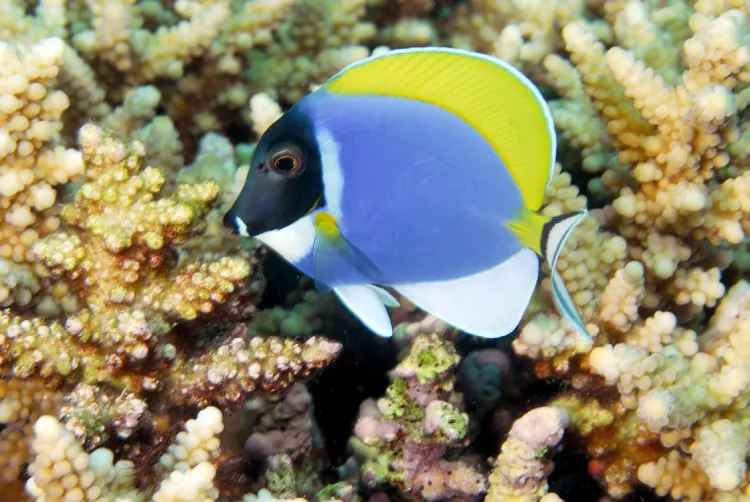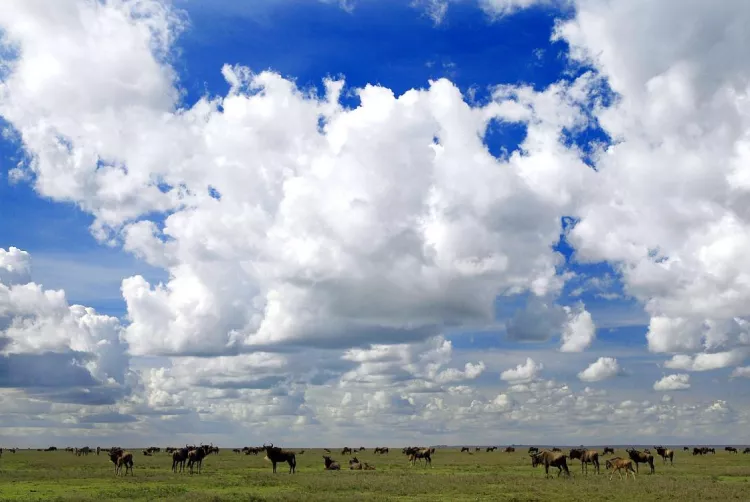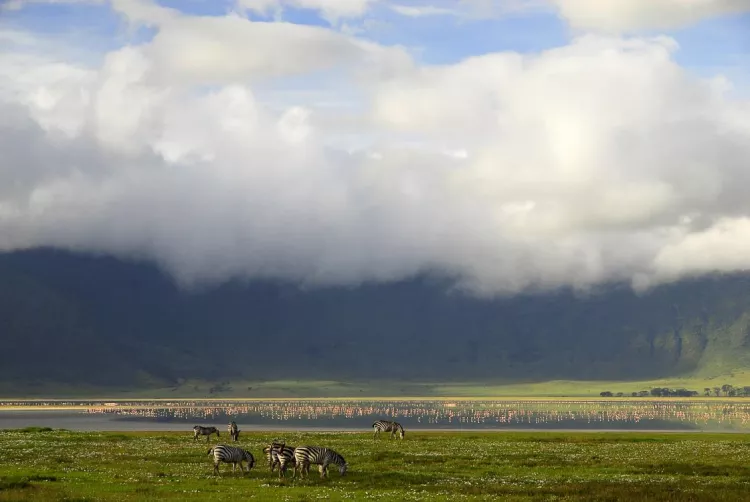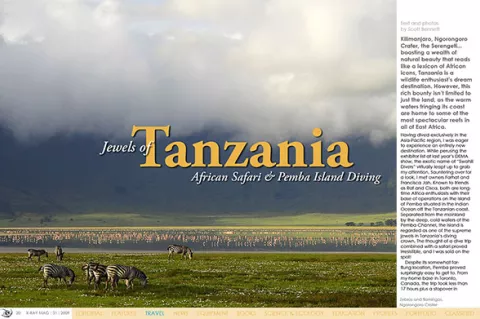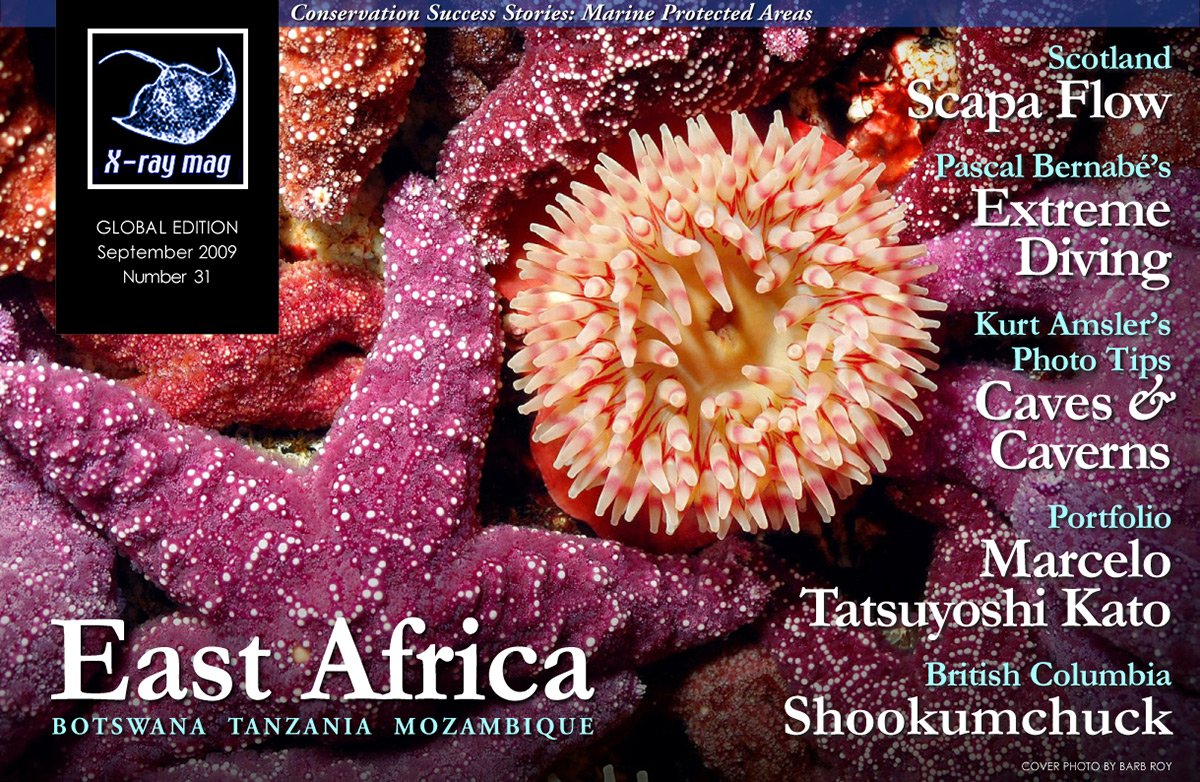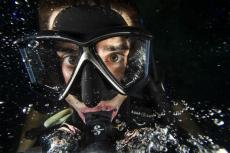Kilimanjaro, Ngorongoro Crater, the Serengeti... boasting a wealth of natural beauty that reads like a lexicon of African icons, Tanzania is a wildlife enthusiast’s dream destination. However, this rich bounty isn’t limited to just the land, as the warm waters fringing its coast are home to some of the most spectacular reefs in all of East Africa.
Contributed by
While perusing the exhibitor list at last year’s DEMA show, the exotic name of “Swahili Divers” virtually leapt up to grab my attention. Sauntering over for a look, I met owners Farhat and Francisca Jah. Known to friends as Raf and Cisca, both are long-time Africa enthusiasts with their base of operations on the island of Pemba situated in the Indian Ocean off the Tanzanian coast.
Separated from the mainland by the deep, cold waters of the Pemba Channel, the island is regarded as one of the supreme jewels in Tanzania’s diving crown. The thought of a dive trip combined with a safari proved irresistible, and I was sold on the spot!
Despite its somewhat far-flung location, Pemba proved surprisingly easy to get to. From my home base in Toronto, Canada, the trip took less than 17 hours plus a stopover in Amsterdam. The international gateway is Dar es Saalam, the country’s largest city and home to over three million inhabitants. My late night arrival necessitated an overnight stop in the city. The thrill of finally being in Africa made for a very sleepless night.
The next morning, it was back to the airport for my domestic flight to Pemba. The island, along with neighbouring Unguja (the main island, informally referred to as Zanzibar) and a host of smaller islands comprises Zanzibar, a separate state within the United Republic of Tanzania.
After boarding my ZanAir island-hopper, it was only a 20-minute flight to Zanzibar, where we had had a brief stopover before resuming the journey to Pemba. My visit also coincided with the advent of the rainy season. Enroute, we skirted an immense thunderstorm before finally landing at Pemba’s diminutive terminal.
Compared to the bustle of neighbouring Zanzibar, the atmosphere on Pemba was decidedly sedate. Pemba’s fertile countryside is blessed with undulating hills of verdant green interspersed with fertile valleys and forests. Coconut palms dominated the landscape along with a myriad of mango, breadfruit, and banana and clove trees. The dominant crop on the island, cloves, were introduced by the Omani Arabs from Mauritius. Over three million clove trees are found throughout the island and is now a bigger producer than Zanzibar itself. Clove smuggling is considered a very serious offence on the island—a fact reinforced by the numerous police checkpoints passed on the way.
Driving north from the regional capitol of Chake Chake, the roads became progressively rougher with oxcarts providing the primary form of vehicular transport. Nearing our destination, the road entered the verdant confines of the Ngezi forest. Home to the island’s last expanse of protected forest, the reserve hosts prolific wildlife, including five endemic bird species. Dense stands of red mahogany towered above, while vervet monkeys peered down from the lofty branches. After a scenic 90-minute drive, we finally reached the turnoff to the resort.
Established in 1999, Swahili Divers had its original base of operations in the town of Chake Chake. Then, in October 2006, Raf and Cisca opened their newly built Kervan Seray Beach Resort on the northwest coast of the island. Accommodation is in simple but comfortable bungalows featuring spacious four-poster beds draped with mosquito netting. The outdoor bathrooms are equipped with showers providing solar-heated water. Electricity is available in the evenings between 6:00 and 11:00pm, and for those that absolutely cannot live without it, internet access is available via satellite. The 30-40 staff members come from Chake Chake and the nearby village of Makangale.
Upon checking into my room, I soon came across some of the local wildlife, albeit of the creepy-crawly variety. Moving languidly across my outdoor bathroom floor was a decidedly hefty millipede that was big enough to put on a dinner roll.
As the burgeoning humidity was starting to take its toll, Cisca asked if I’d like to sample a local cold drink. Always eager to partake in the local cuisine (providing it isn’t endangered), I readily agreed. Moments later, I was presented with a brown bottle emblazoned with the lyrical name of Stony Tangawizi. Sounding like the name of a Flintstones character, I was pleasantly surprised to discover a crisp flavour reminiscent of ginger beer. I ended up having a lot of them over the ensuing week.
Diving
Separated from the African continental shelf by sheer walls that drop down to over 300 metres, Pemba’s northwest coast is dominated by a series of barrier islands separated by three passages: Ngao, Fundo and Uvingi. At high tide, large volumes of water flush through the passages, bringing in the big fish and providing nutrients for abundant coral species. Wall and drift dives are the order of the day, with a wide variety of easily accessible dive sites.
After a day of rest, I was eager to get in the water. Well, not TOO quickly. At high tide, the exposed shoreline consisted of a large swathe of jagged exposed limestone. The still wet surface necessitated careful negotiation, but my camera and I made it to the boat without incident. Transport was courtesy of the resort’s Tornado Rigid inflatable boat. As polyurethane and the hot African sun proved incompatible, the tubes had been replaced with specially designed buoyant fiberglass pontoons. As there wasn’t a ladder, getting on board proved to be somewhat interesting as I’m not, shall we say, petite. Hopping in from the shallows wasn’t a problem, but hauling myself aboard in deep water proved to be a challenge, to say the least!
Our first destination was a mere ten minutes away. Situated adjacent to a historic old lighthouse dating from 1901, Swiss Reef turned out to be one of those proverbial high-voltage drift dives you always hear about! Within moments of descending, the powerful current propelled us over a series of undulating ridges rising from the seabed. A kaleidoscope of colourful reef fish swam effortlessly amongst abundant tubastrea corals, but I soon realized photographing anything would be a near impossibility! I forgot about the camera and just enjoyed the dive for the sheer joy of it. At one point, a large bommie offered just enough protection from the raging current that I could stop and photograph a large school of yellow sweepers.
That evening, dinner was held in a large open thatched-roof bure overlooking the waters of the Pemba Channel. I arrived just in time for a spectacular sunset, the sky ablaze with intense hues of red, orange and yellow silhouetting the distant peaks of the Usambara Mountains on the mainland. Everyone sat at the same table, creating a friendly communal atmosphere. After a sumptuous meal of freshly caught red snapper, my Zanzibar spiced coffee was interrupted by a maniacal cackling resembling the laughter of a demented clown. Seeing my perturbed expression, Cisca laughed and told me it was merely a greater galago, more commonly known as a bushbaby. Members of the primate family, these cat-sized creatures resemble the lemurs found on neighbouring Madagascar.
At that moment, Raf brought out a bottle of Turkish ouzo, also known as raki. The word Ouzo is a derivative of uzum, which is Turkish for grapes. The raki, in combination with my malaria medication, infused my sleep with dreams of Dali-esque proportions that even a wailing bushbaby couldn’t penetrate!
The remainder of the week was spent exploring the area’s superlative dive sites. The nearest passage to the resort is NgaoGap, a ten-minute boat ride away. End of the World and D F Malan boasted hard coral gardens of unparalled diversity, with table and staghorn corals growing everywhere with reckless abandon. Cabbage corals were all over the place, stacked atop one another like tiers of a marine wedding cake, while rocky outcrops played host to numerous sponges, anemones and bubble corals.
A bit more challenging was Rudy’s Wall, situated right at the gap’s entrance. According to Raf, this site is not dived very often due to the strong currents that converge here. One day we lucked out, arriving right at the verge of the slack tide. Entering the water, the surface chop was fierce and it took some effort to descend down the mooring line. The effort was well worth it as the walls were adorned with luxuriant fan corals garbed in pastel hues of pink, orange and red. Nearby was Emilio’s Back Passage, which featured a gigantic fissure hewn into the sheer vertical wall. Many divers could easily fit into it at once with room to spare.
A bit further afield lay Fundo Gap. If anything, the sites here proved to be even more spectacular! Manta Point featured a wall descending to 28m, with the reef top at 6-8m depending on the tide. Alas, the congregations of mantas that used to frequent the area are long gone, the unfortunate victims of over fishing. Nevertheless, this was a stunning site boasting a tremendous variety of hard corals and abundant fish life. A few weeks before my arrival, a great hammerhead was sited just off the wall, as was a juvenile manta.
Deep Freeze gets its name from the cold upwellings surging up from the depths. Here, my borrowed 5mm suit proved to be most useful indeed! Yellow fan corals adorned the precipitous drops offs, while schools of yellowtail fusiliers congregated in the blue just off the wall. At the current-swept point, large schools of jacks and barracudas are routinely encountered. Although I missed them, I did spot a couple of big Napolean wrasse. Maddeningly, they proved to be just as camera-shy as their Pacific cousins.
The deep waters of the Pemba Channel attract a large number of game fish species. On one occasion, as Mohamed maneuvered the boat into anchoring position, we saw the unmistakable silhouette of a sailfish erupt from the surface. Alas, it didn’t make a repeat appearance underwater.
One of the real pleasures of Pemba was observing a lot of new fish species. While many Pacific notables were present, such as Moorish idols, coral trout, oriental sweetlips, regal and emperor angelfish, there was also myriad of Indian Ocean specialties. After one dive, I asked what the powder blue surgeonfish was. I was bemused to discover it actually WAS a powder-blue surgeonfish!
Other colourful denizens included Alland’s anemonefish, ring-eyed hawkfish, lyretail hogfish and an exquisite Indian sand wrasse, its vivid red body accented with white spots encircled with black. Pemba is also home to some absolutely monstrous titan triggerfish. I’m eternally grateful that none of them exhibited aggressive behaviour!
Topside attractions
Although it would have been easy to spend all day in the water, I also wanted to experience some of Pemba’s terrestrial attractions. One afternoon, Laura from reception drove me up the coast to visit the lighthouse I’d seen on the first day. Despite only being in the country a short time, she handled the land rover like a true pro, effortlessly negotiating the copious ruts and potholes during the bumpy 20-min trip. Upon arrival, we were immediately thronged by a gaggle of curious children who stayed with us for the remainder of our visit.
The lighthouse certainly boasted a unique design—it’s towering central column surrounded by an intricate network of rusted metal struts and beams. Nearby, an ancient looking corrugated metal structure housed several families, including that of Ali, the youthful-looking lighthouse keeper. He immediately asked if I wanted to go up to the top. As heights aren’t my favourite thing, I wasn’t particularly enamored by the idea but threw caution to the wind and decided to go for it.
Once inside, the heat was downright oppressive as I started the precipitous climb up the constricting 30m spiral staircase. Once at the top, my discomfort was forgotten in seconds. Complimented by a refreshing cool breeze, I was rewarded with a spectacular panorama encompassing the entire northern end of the island. Ali then gave a charming, well-rehearsed speech on the lighthouse’s history before we headed back down again.
On the way back, we made a detour to Vumawimbi Beach on the other side of the peninsula. Azure waters lapped a powdery white-sand beach fringed with coconut palms, while offshore, a small flotilla of Arabian-style dhows bobbed in the gentle surf. The only thing missing from the idyllic scene was hordes of tourists. Welcome to Pemba!
As well as being actively involved in the local community, the resort even has its own fire engine. The “Green Goddess” is a circa 1950’s army vehicle that Raf shipped from the UK. Fire drills for the staff members are held on a regular basis. One afternoon, while watching the proceedings, I learned a valuable lesson: NEVER leave a camera bag unattended in the immediate vicinity of a fire hose. At one point, a staff member accidentally let go, and the wildly flailing hose scored a direct hit on my hapless camera bag. The blast flipped it upside down, spilling several lenses on to the soggy ground. Miraculously, nothing was damaged (but definitely a bit cleaner).
Misali & Kashani Islands
For my last full day of diving, Raf had something special planned: a full day excursion to Misali Island. All week long, I’d practically been salivating at the string of superlatives used to describe Misali’s undersea treasures, so I couldn’t wait! It was also a full boat. The previous evening, the number of guests virtually doubled in one fell swoop and a number of them were divers. Along with Raf, dive guide Mohamed and the boatman, there were nine divers on board for the 45-minute trip.
As it turned out, our destination was not Misali itself, but a special site known only to Raf. Situated past the Uvingi Gap, the small island of Kashani was alluring enough above water, its shoreline encircled by waters of the most exquisite hue of turquoise. It also takes the prize for the most unlikely name for a dive site I’ve ever heard: Slobodan’s Bunker. It turns out Raf discovered the site the day Slobodan Milosovic was apprehended.
As we arrived just at the tail end of the slack tide, everyone had to gear up quickly in order to maximize our dive time before the currents became to strong.
Although the name “bunker” conjures up visions of drabness, Slobodan’s proved to be anything but. Entering the water, I was instantly spellbound by a site of staggering diversity. Resembling the knuckle of a gigantic hand with the fingers outstretched, the coral- shrouded walls were the epitome of exuberance. Tubastrea, whip, table and soft corals jostled each other for space along with tube and barrel sponges. A school of blackspotted sweetlips hovered above one large tubastrea, joined by bronze soldierfish and blood-spot squirrelfish. Nearby, a large map puffer waited patiently as a cleaner wrasse performed its duties while vast swarms of basslets observed the proceedings. Startled by the unexpected appearance of our group, a large potato cod bolted for the safety of the depths.
Upon hearing some frantic tank banging, I spun around to see a large Napolean wrasse. Moments later, a school of five swam by further below with one of the divers in hot pursuit. Boasting a gigantic, humped forehead, the male fish leading the entourage was the largest specimen I’ve ever seen. I started to follow until I checked my computer; I was already at 26m. The other diver was already well beneath me, the fish beneath her and the bottom plainly visible beneath all of the above. It was at that moment I realized the visibility was easily 40m! I thought it would be a good idea to ascend to shallower water. Unfortunately, the dive ended way to soon. I could have easily spent the rest of the day here.
After a shore interval on a blindingly white beach, we headed for our final dive at a site called Atta Turk just off Uvingi Island. This time, I was set up for macro, and there was plenty to keep my camera occupied. Two-band clownfish, porcelain crabs, pipefish, fire dartfish, flatworms and a host of other critters kept my shutter clicking for the duration of the dive. The highlight was an exquisite nudibranch with a semi-transparent white body etched with a patchwork of yellow lines. Wow!
Ngezi Forest stroll
On my last afternoon, I arranged a walking tour through the nearby Ngezi Forest. At one time, swathes of forest once dominated much of the island, but starting in the mid 19th century, much was cleared for clove cultivation. Encompassing 1,440 hectares, the reserve was established in the 1950s to protect last remaining stands of the island’s indigenous forest.
It is home to abundant wildlife including vervet monkeys, blue duiker (a small forest antelope), hyrax, marsh mongoose and several species of bats including the endemic Pemba flying fox. The Portuguese introduced pigs several centuries ago, but as the local population abstains from eating pork, their numbers increased exponentially. The reserve is also home to a myriad of birds, five of which are endemic.
After checking in at the park office with ranger Ali, I went on a walk with my guide Ali (I was beginning to wonder if that was the only first name on the entire island). Within moments, we came across what seemed to be the reserve’s most numerous resident. The damp pathway was strewn with a plethora of giant millipedes.
Upon entering the confines of the forest, the humidity packed an immediate wallop. Clusters of epiphytic ferns shrouded the trees, while an extraordinary array of writhing vines cascaded down to the expansive buttress roots below. Ali could name every tree, many of which were used for medicinal purposes by the local people.
After a sensational week, it was time to bid Pemba adieu. Raf and Cisca were gracious hosts and the relaxing atmosphere and good company made my departure difficult to say the least. The island made for a unique introduction to Africa but a highly memorable one.
African safari
No trip to Tanzania would be complete without experiencing some of the country’s spectacular national parks and reserves. Protecting a remarkable 25 percent of the country, they are home to an extraordinary diversity of wildlife. The hard part was deciding where to start!
Before leaving home, Cisca put me in touch with Bush2Beach, an Arusha -based safari company run by Chris Piller and his partner Ingrid Vaes.
Gateway to the northern safari circuit, the city of Arusha is the country’s safari headquarters with over 200 government-recognized safari companies (and half as many again that aren’t). They arranged an incredible personalized itinerary that not only included icons like Ngorongoro and the Serengeti, but also some lesser-known destinations such as the Usambara Mountains and Mkomazi National Park, the country’s newest. Joining me was John, my Tanzanian driver. With 15 years game-spotting experience under his belt, I knew I was in good hands.
Usambara Mountains. Our first stop was the Usambara Mountains, situated inland from the Swahili coast near the Kenyan border. One doesn’t usually think of rainforest in savannah-dominated east Africa, but the Usambaras rise from the surrounding plains like an archipelago of forest-clad islands. They are part of the Eastern Arc Mountains, a string of 13 ancient ranges that are the oldest in East Africa. Often dubbed “Africa’s Galapagos”, these mountains contain the highest number of endemic species in all of Africa. While large animals are conspicuously absent, the area is a treasure trove of endemic species, particularly, birds, reptiles and amphibians.
Amani Nature Reserve. Tucked away at the eastern end of the ranges, the Amani Nature Reserve is a botanical wonderland. Opened in 1997, the reserve protects 10,000ha of the most extensive montane rainforest to be found in Tanzania. A series of excellent walking trails offers sublime forest scenery and outstanding birdwatching. At the last count, 340 species have been recorded here including 19 endemics. Noteworthy residents include silvery-cheeked hornbills, Fischer’s touraco, Usambara eagle owl and a host of sunbirds, starlings and flycatchers. Chameleons are especially prolific and the area is the original home of a flower known the world over: the African violet.
Several hours to the west, the Western Usambaras provide a totally different experience. Much higher in elevation, they also boast a very different look with extensive stands of eucalyptus trees carpeting the slopes.
The steep-sided valleys are home to a diverse patchwork of cultivated farmland, plantations and patches of indigenous forest. Situated at 1,400m, the town of Lushoto is the gateway to the region. A number of German colonial buildings dating from the early 20th century can be found rubbing shoulders with colourful local markets.
A number of nature reserves offer a plethora of scenic walking trails through lush native forest brimming with birdlife and cascading waterfalls. Lying at the edge of the Usambara massif, the Irente Viewpoint offers stupendous views across the arid Masai Steppes 1,000m below. Numerous resorts cater to frequent tourists, particularly expats, who come here to escape the sweltering heat of the nearby coast.
Mkomazi National Park. Despite being in the country for nearly two weeks, I had yet to experience the quintessential African bush. That introduction was made in a rather unique and special place. Mkomazi National Park is Tanzania’s newest, having been established in 2007. With its northern boundary adjoining Tsavo National park in neighbouring Kenya, the park was initially established as a Game Reserve in 1951. Mkomaze takes its name from Pare tribe’s word for “scoop of water”, in reference to the dry conditions.
Lying in the shadow of the Usambara and Pare Mountains, the park encom-passes 3,700 square kilometers of semi-arid savannah dotted with acacia scrub and baobab trees. It is home to a number of dry country species rarely encountered elsewhere in Tanzania, including fringe-eared oryx, lesser kudu and the gerenuk—a gazelle distinguished by its habit of standing tall on its hind legs to reach for acacia leaves utilizing its elongated neck. Other residents include giraffe, hartebeest, Grant’s gazelle, elephant, zebra and dik-dik (a diminutive antelope). An unexpected bonus was a close encounter with a female cheetah and her two cubs; I was told that cheetahs weren’t even known to live in the park. White-bellied go-away birds, martial eagles, red-billed hornbills, black bellied bustards, ostrich, secretary birds and lilac-breasted rollers are just a few of the 450 species of birds.
The animals here tend to be skittish, as they have long associated people and vehicles with guns. While viewing wildlife may not be as easy as in some of the big parks, it provides an opportunity to experience an unspoiled landscape with virtually no tourists. Mkomazi doesn’t share her secrets easily, but when she does, it is truly special.
Arusha National Park. Another overlooked gem lies virtually on the doorstep of the city of Arusha. Only 40 minutes from the bustle of the city, Arusha National Park offers an enthralling assortment of habitats ranging from savannah and acacia woodlands to rolling hills, lakes and mountain slopes shrouded with lush rainforest, allowing visitors a chance to experience a broad range of environments in a relatively compact area. The diverse animal population includes, giraffes, zebras, buffalos, baboons, elephants, hippos, leopards, hyenas, waterbucks, warthogs and a wide range of antelope species.
The dominating feature is the imposing silhouette of Mt. Meru, its summit and eastern slopes protected within the confines of the national park. While not attaining the lofty heights of its more illustrious neighbour, Kilimanjaro, it is the continent’s fifth highest peak, rising to an elevation of 4,566 metres. The luxuriant montage The luxuriant montage forest is inhabited by prolific birdlife, blue monkeys and red duiker. It is also one of the best places in the country to see the striking black and white colubus monkey. We were even fortunate to observe one on the ground, looking the entire world like a misplaced skunk as it scampered across a grassy clearing enroute to a nearby tree.
On the way back down, we rounded a corner to discover four elephants grazing in a clearing at the forest’s edge. “You are VERY lucky,” intoned John with a smile as most visitors to rarely encounter elephants.
Further north, rolling grassy hills encircle the serene beauty of the Momela Lakes, whose shallows are often awash with the pink hues of thousands of greater and lesser flamingos. Other birdlife includes crowned cranes, Egyptian geese and a myriad of herons and egrets. Due to the absence of lions, it is one of the few parks in Tanzania that allow walking safaris, albeit with an armed guard. Exploring the park on a 90-minute walk was a definite highlight of my entire trip.
I could have easily spent a few days here. Due to my incessant picture taking, we didn’t get to visit all the stops on our itinerary. Ngurdoto Crater, whose steep, rocky cliffs enclose a broad marshy floor dotted with herds of buffalo, will have to wait until next time. However, the park had one final surprise in store. Just as we reached the park gate at sunset, I turned to see that the veil of cloud had dispersed, revealing Kilimanjaro’s imposing snow-capped summit.
Ngorongoro Crater. Undoubtedly, one of Tanzania’s crown jewels is the Ngorongoro Crater. Not actually a national park, the crater is a part of the Ngorongoro Crater Conservation area, which encompasses an area of 8,300 square kilometres. Ngorongoro is a place of superlatives. Standing at the viewpoint at 2,300m is nothing short of awe-inspiring. Stretching 23 kilometres across, this vast natural amphitheatre is the world’s largest intact volcanic caldera. A proverbial Garden of Eden, the crater floor is home to an estimated 25,000 large mammals.
All the mainstays are here including elephant, lion, hippo, warthog, ostrich, buffalo, spotted hyena and some impressive bull elephants sporting some of the biggest tusks to be seen in East Africa. One of the most notable (and endangered) residents is the black rhino. Poached to virtual extinction throughout East Africa, Ngorongoro is one of their last strongholds in Tanzania. Rigorously protected, there are estimated to be 19-25 individuals inhabiting the crater. There is one prominent absentee, however: giraffes. This is due to the relative lack of acacia trees, whose leaves are their favourite food.
I was initially disappointed to discover we only had one full morning at the crater. Then, I discovered why; entry fees to the park are a whopping US$200.00 per vehicle—and that’s not necessarily for the whole day. If you leave the crater and come back later in the day, the fee is charged again Apparently, this increase was initiated to help reduce tourist traffic, which, can look like a traffic jam at rush hour. During my visit in the wet season, tourists were few, and the crater floor was a vibrant carpet of lush green grass. While some cynics may liken the experience to a gigantic safari park, this is no zoo! The predators mix freely with the prey, creating an unparalled wildlife experience that is not to be missed.
Serengeti. Bordering Ngorongoro is Tanzania’s most famous national park, the world–renowned Serengeti. A World Heritage Site, its name is derived from the Masai word “siringet”, meaning empty place. The sense of space is overwhelming, with endless skies presiding over a vast plain teeming with wildlife. It also plays host to one of the greatest wildlife spectacles on the planet. Commencing at the end of April, up to one million wildebeest congregate in the park’s southern section before commencing their migration to Kenya to follow the rains. Joining them are several hundred thousand zebra and numerous species of gazelle .
A characteristic feature of the park’s southern areas the distinctive outcrops of granite boulders called kopjes. They are especially popular with lions, which perch imperiously atop the large granite boulders. Those who bemoan lions’ lack of activity in zoos will be surprised to discover they are just as active in the wild, as they usually sleep 20 hours a day. Lying on their backs with legs splayed, they resemble giant housecats, although their inoffensive appearance would change dramatically if a person decided to exit the vehicle.
Other large cats make their home in the park. A keen eye may reveal the telltale tail of a leopard lounging high in an acacia tree, while cheetahs are often observed sitting on rocky outcrops scanning the horizon for prey.
The junction of the Seronera and Orange rivers boasts a deep pool that is a favourite haunt of hippos. Lazing about in the water, their generally placid demeanor belies the fact that they kill more people in Africa each year than every other large animal combined. Crocodiles are also frequently encountered here, although they give the hippos a wide berth. Bird life is especially prolific with over 500 species present. After three days of non-stop photography, both my camera and I were exhausted.
With its seemingly infinite bounty of attractions both over and under the water, Tanzania was unlike any destination I have visited before. Three weeks flew by in a heartbeat, but the experience will last a lifetime. It’s definitely a journey I will undertake again. ■
Published in
- Log in to post comments

